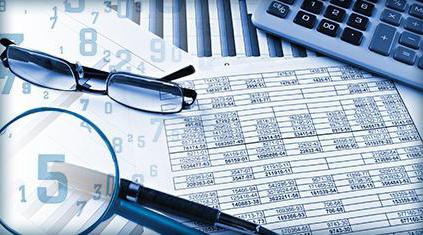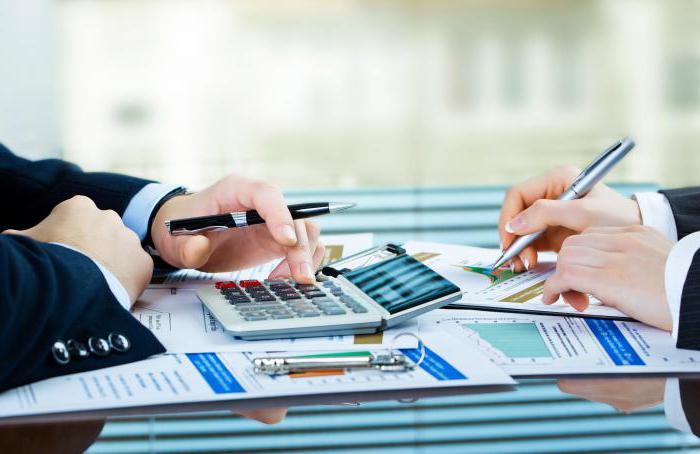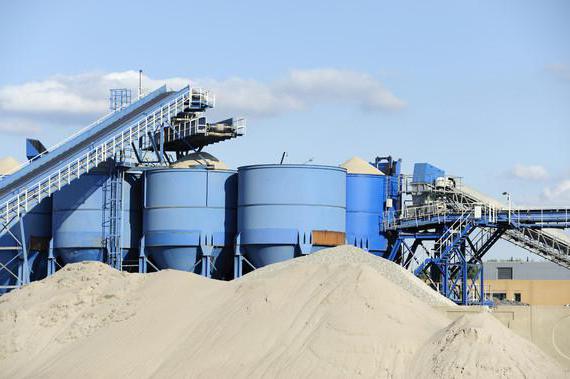Accounting materials in accounting occupies an important place in the financial activities of the enterprise. The supplied materials and raw materials are the main source for the production of products.
MPZ is ...
TO inventory include acquired in order to carry out work aimed at profit, low value property. Purchased funds are allocated to production or administrative needs. To account for the MPZ, an active synthetic account 10 is used.
Depending on the type of materials, open the appropriate sub-accounts to collect information in a certain section.
Organization of accounting
The basis for the organization of accounting of the MPZ is the principles of its maintenance:
- at the place of storage;
- for each responsible person;
- assignment of materials to the appropriate group, depending on their type.
At the warehouse, the storekeeper is responsible for the materials; he also makes notes in the form of No. M – 17 accounting cards. A separate document is opened for each number, entries in which are carried out on the basis of primary accounting registers. After they make entries in the warehouse cards, the documentation is transferred to the accounting department.
Subaccounts
The main materials in accounting are allocated to subaccounts. Mostly grouping is carried out by the category of materials. For example, different types of transport fuel are combined into one category.

An organization may use the following material accounts:
- 10.1 - to account for the inventories that are involved in the production process and their value is part of the products;
- 10.2 - to collect information about components;
- 10.3 - to account for the fuel and lubricants used;
- 10.5 - for accounting of spare parts and materials necessary for transport and production equipment;
- 10.6 - to account for other materials necessary for economic and administrative activities;
- 10.9 - for accounting inventory items;
- 10.10 - to reflect information on the number of units of special clothing, equipment in stock;
- 10.11 - to reflect usage data specialist. clothes and other uniforms.
Additionally, other sub-accounts can be opened to group information on the movement of raw materials.
Methods of accounting in the context of data
Accounting materials of the organization is determined by the selected method of conducting analytical accounting, of which there are two: negotiable and balance.
The reverse method of accounting is carried out at the warehouse and in accounting simultaneously in two expressions: quantitative and monetary. At the same time, turnover sheets are used. Revolving materials in accounting can be performed in two ways.
The first way of accounting
For each type of material, a separate analytical accounting card is opened. It reflects expenditure and income transactions. Information is reflected both in the number of units of materials and in monetary terms.
At the end of the month, a turnover sheet is compiled for each warehouse. Amounts can be displayed separately for sub-accounts, synthetic accounts, groups of materials. Be sure to indicate the total amount for the warehouse in question. The information is grouped into a consolidated turnover sheet, and then the collected data is checked against the indicators on the synthetic accounts.
The second way of accounting
Documents describing expenditure and receipt operations on materials are collected in groups based on stock numbers. At the end of the month, the final data is reflected in the turnover sheet in the context of the necessary synthetic and analytical accounts. Information is compiled in cash and in kind. Based on the data of revolving statements, make free statements.

This option is less time-consuming due to the absence of the need for conducting analytical cards for material accounting. Nevertheless, the revolving method of accounting for materials is cumbersome and irrational even when using item numbers.
Balance method of accounting
It is considered a more progressive way of accounting for the movement of materials. Bookkeeping in this case does not reflect warehouse accounting again, but uses its data. In the time period established by the organization, the accounting officer checks the correctness of the inventory and personally signs the cards.
At the end of the month, the head. the warehouse or the accountant himself writes the data in quantitative terms to the balance sheet. Further information processing deals only with accounting. The unit cost of the remaining materials is displayed at the accounting price set for each group separately, and in general for the warehouse. Then compiled a summary balance sheet.
Accounting for the use of materials also involves filling out accumulative statements that reflect information about their movement. After calculating the results of the monthly turnover, the data is transferred to the consolidated cumulative list. Every month, they check the performance of statements on the movement of materials and balance sheet documents.
Valuation of materials upon receipt of the warehouse
Accounting for the receipt of materials is most often carried out at their actual cost, which is the cost of the enterprise to purchase, excluding the amount of VAT and other taxes recoverable.

The actual cost includes the following amounts:
- paid to the seller on the basis of the contract;
- paid to intermediaries for the information and consulting services necessary for the acquisition of a refinery;
- customs fees;
- non-refundable tax fees;
- transportation and procurement costs;
- other costs associated with the purchase of materials.
The list of actual costs does not include administrative and general running costs with the exception of cases in which the costs are directly related to the purchase of the refinery.
The actual value of property received free of charge is calculated using market prices at the time of registration of the arrival. MPZ contributed to the authorized capital are subject to a monetary valuation before being accepted for accounting.
Accounting of materials in accounting can be done at the book price of each of the categories of MPZ. In this case, accounts 15 or 16 are used. The income is reflected in the debit, and the write-off is reflected in the loan. The method of receiving materials at book value is usually used in cases where the supply of a certain type of material is regular.
Assessment of inventories in tax accounting
Materials must be accepted for mandatory documentation upon admission. Accounting and tax accounting have some differences when reflecting the costs of acquiring materials, which make up the actual cost. In general, cost items are the same, but tax accounting does not recognize interest on loans that were accrued prior to the adoption of materials for expenses associated with the purchase of materials. This should be emphasized and when conducting tax accounting, do not include this article in the calculation of cost.
Postings when accepting the inventories if the purchase was made
Accounting for the acquisition of materials at actual cost is reflected by the posting: Dt "Materials" Kt "Settlements with suppliers". This is the first operation in the chain. Next, the accountant will write:
- Dt "VAT" Kt "Settlements with suppliers" - the amount of input VAT.
- Dt "Calculations for VAT" CT "VAT" - the amount of VAT deductible.
- Dt "Settlements with suppliers" CT "Settlement account" - the amount of debt for the refinery paid to the supplier.
All expenses included in the articles of actual cost are collected on the production account, and then debited to account 10.

If the company accepts materials at discount prices, the following transactions are made:
- Dt "Procurement and procurement of material values" CT "Settlements with suppliers" - materials have been received (the amount at which they accept MPZ is established by an agreement with the seller or other documents).
- Dt "Procurement and acquisition of material values" CT "Settlements with suppliers" - the cost of transport costs is included in the actual cost;
- Dt "Materials" CT "Procurement and acquisition of material values" - materials are capitalized at book value.
- Dt "Deviation in the cost of" CT "Procurement and acquisition of material values" - shows the excess of actual cost over the corresponding accounting value.
- Dt "Procurement and acquisition of mat. Values" Kt "Deviation in value" - taken into account the exceeding difference between the accounting price and actual cost.
If the materials received are not owned by the enterprise, but are received on time, they are reflected in the debit of account 002.
Acceptance of inventories in other cases
Materials can be delivered to the organization’s warehouse not only through a transaction with a supplier. Consider the accounting of materials in accounting that were acquired in other ways:
| Dt | Ct | Operation Characteristic |
| 10/15 | 98.2 | Granted materials received |
| 98.1 | 91.1 | Reflects the amount of income brought by donated materials |
| 10/15 | 91.1 | Materials entered the warehouse at market value as a result of liquidation of fixed assets |
| 10 | 75 | MPZ made as a contribution to the authorized capital |
It is worth noting that the accounting of the consumption of materials is always expressed by posting using the credit of account 10. It does not matter how the organization writes off the inventories for production.
Write-off of materials in accounting
Assessment of the cost of inventories upon their disposal in the production process can be carried out using one of the methods:
- average cost price;
- the value of the unit cost MPZ;
- by FIFO;
- by LIFO.

The cost of materials in accounting for write-offs on the average value of cost is one of the usual methods. In the period MPZ write off at accounting prices for production. At the end of the reporting month, the deviation of the actual cost and accounting prices is calculated. The resulting amount is written off. We will consider an example of calculation according to the data indicated in the table.
| Discount price | Actual cost | Deviation | |
| Opening balance | 21600 | 22800 | +2400 |
| For the month received | 41050 | 43100 | +3250 |
| With the remainder received | 61450 | 64700 | +4450 |
| Spent for the reporting period | 46800 | 49262 |
Follow the steps:
- Define the coefficient of deviations: 4450 ÷ 61450 = 0.072.
- We calculate the deviation of the actual cost of accounting prices: 46800 × 0.072 = 3370 p.
- We calculate the actual cost of the spent materials: 46800 + 3370 = 50170 p.
The amount of 3370 rubles is subject to write-off. as the difference between the actual cost of materials and the cost at which they were written off in production.
The valuation method for the cost price of the MPZ unit is used for irreplaceable types of stocks, as well as when accounting for valuable materials (for example, precious).
FIFO methods and LIFO
Writing off materials in accounting according to FIFO requires compliance with the rule: regardless of the batch being put into production, it is taken into account at the cost of the first purchase. After a complete write-off of the amount of materials of the first batch, the rest is written off at the cost of the second, third, etc. batches. The valuation of the remaining materials in the warehouse is performed, on the contrary, at the cost of the last delivery.
The method is often used when purchasing similar materials or raw materials. It is beneficial to the enterprise in cases where the market value of the refinery cheaper.

Consider an example: in the enterprise’s warehouse there are 400 tons of the same cement, which was purchased from different sellers. 200 tons of the first batch purchased at 3200 p. per ton, and the remaining 200 tons - 3300 p. per ton. If 30 tons of cement are written off, the accountant will take into account the cost of one ton of 3200 r. until the entire volume of the first delivery of the material has been written off. In this case, it does not matter from which purchase cement will be taken.
The LIFO method implies the use of the opposite rule: first, the MPZ is written off at the cost of the last batch and so on in descending order. Accounting for stock balances is carried out at the prices of initial delivery.
The amount of consumed materials accounted for using the FIFO or LIFO method is determined by the formula:
P = On + P - Otowhere:
ABOUTn - the amount of the balance of materials at the beginning of the month;
P - the cost of accepted materials;
ABOUTto - the cost of the balance of materials at the end of the month.
Inventory
Accounting of materials in accounting should be carried out continuously and reflect reliable information about the actual availability of inventories in stock. To check the accounting data with real indicators, the enterprise carries out an inventory, during which authorized persons verify the data of the accounting registers and calculate the number of corresponding units in the warehouse.

To reflect the inconsistency of data between accounting and actual availability, the following procedure has been created:
- Surpluses are recorded at the market price on the date the inventory is completed. The amount shown in the financial result.
- Deficiencies are deducted from the material accounts in the debit of account 94. After clarifying the reasons for the shortage and the perpetrators, the company establishes the procedure for debiting the amount from account 94.
- Lack of materials or their deterioration within the established limits of natural loss is charged to production costs.
- If it is found that the shortage or damage to the MPZ occurred due to the identified person, the amount is debited from him.
- Amounts of shortages or damage due to unclear circumstances are written off to the financial result.
Correct accounting of the reception and delivery of materials can reduce the amount taxable income.



